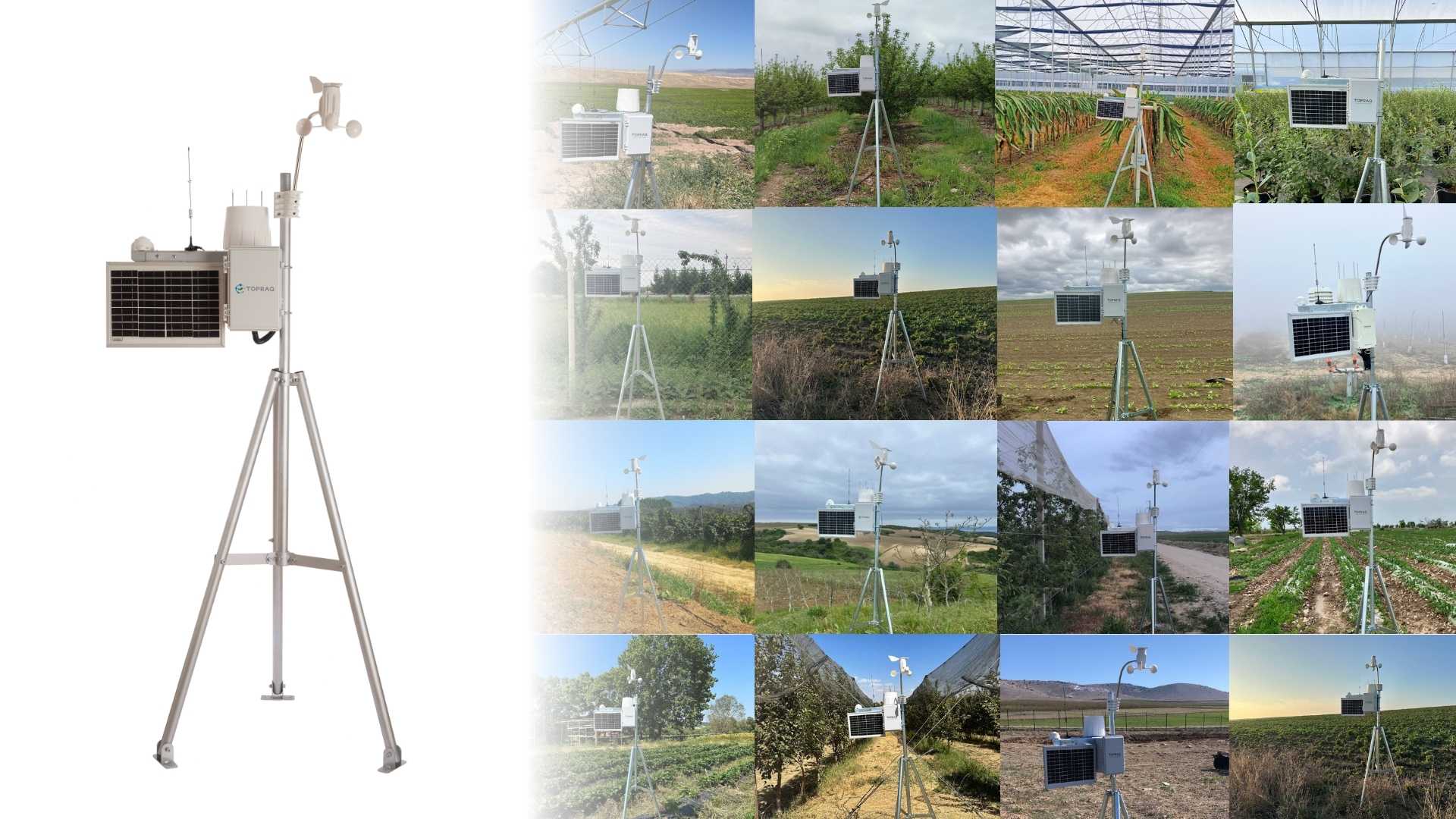At Topraq, we understand the importance of precise measurements in agricultural and environmental monitoring. A pyranometer is a sensor designed to measure solar radiation, which is vital for assessing sunlight exposure. This device is widely used in various industries, including meteorology, agriculture, ecology, and photovoltaic systems. Pyranometers are essential tools that help improve decision-making and optimize processes, from weather forecasting to enhancing solar energy efficiency.
What is a Pyranometer Used For?
Pyranometers serve multiple purposes across different sectors. In agriculture, they help measure the solar energy plants receive, directly influencing crop growth and productivity. For meteorology, they provide crucial data about solar radiation levels, which is instrumental in weather prediction and climate studies. In the photovoltaic industry, pyranometers help monitor solar panel performance, ensuring they capture and convert solar energy efficiently. Additionally, these sensors play a role in ecological studies, assisting researchers in understanding the impact of solar radiation on ecosystems and vegetation.
What Does a Pyranometer Measure?
A pyranometer measures the total solar radiation that reaches a given area, including both direct and diffuse sunlight. This measurement is crucial for evaluating energy inputs into agricultural systems, weather models, and renewable energy applications. The pyranometer sensor converts solar radiation into an electrical signal, which is then displayed in units of measurement like watts per square meter (W/m²). Accurate solar radiation data is essential for optimizing agricultural practices and improving solar energy system efficiency.

How Does a Pyranometer Work?
Pyranometers typically work based on thermopile technology. The sensor contains a thermopile, which absorbs incoming solar radiation. This absorption generates a voltage proportional to the radiation’s intensity. The pyranometer sensor then converts this voltage into a readable signal, giving you a direct measurement of the solar energy received. This process enables precise measurement of both direct sunlight and diffuse radiation, making the pyranometer a versatile tool for monitoring solar conditions in various applications.
What are the Types of Pyranometers?
Pyranometers come in several types depending on the application and required accuracy. Here are some common pyranometer classes:
- Thermopile Pyranometer: These are the most commonly used pyranometers, offering high precision for measuring total solar radiation in agricultural, meteorological, and environmental applications.
- Photovoltaic Pyranometer: Specially designed for use with solar panels, this type of pyranometer measures the radiation that impacts photovoltaic systems, helping to optimize solar energy capture.
- Shade Pyranometer: This pyranometer is used to measure diffuse radiation, which is sunlight scattered by particles in the atmosphere rather than directly coming from the sun.
These different types of pyranometer are tailored to specific applications, ensuring accurate and reliable solar radiation data for diverse needs.
What Should Be Considered When Choosing a Pyranometer?
When selecting a pyranometer, it’s essential to keep several factors in mind:
- Units of Measurement: Pyranometers measure solar radiation in watts per square meter (W/m²). Ensure that the unit of measurement aligns with your application and data needs.
- Cost of Pyranometer: The cost of pyranometer sensors can vary based on type, accuracy, and features. High-end models provide greater precision and durability but come at a higher price. Consider your budget and application requirements when choosing a sensor.
- Sensor Class: Different pyranometer classes are available, each suited for specific applications. Whether you’re measuring radiation for agricultural monitoring or photovoltaic systems, choosing the right class ensures accurate data collection.
- Calibration: Accurate calibration is essential for ensuring that your pyranometer provides reliable and consistent readings over time.
- Environmental Conditions: Make sure to select a pyranometer that is appropriate for the environment in which it will be used. Some sensors are built to withstand extreme conditions, while others are designed for more controlled environments.
Benefits of Using Pyranometers in Agricultural Operations
Pyranometers offer several key benefits in agricultural operations, helping farmers optimize productivity and manage resources more efficiently:
- Optimizing Crop Growth: By measuring solar radiation, pyranometers help determine the amount of sunlight plants receive. This data is vital for making informed decisions about irrigation, fertilization, and crop management, ultimately improving crop yields.
- Enhancing Irrigation Systems: Accurate solar radiation measurements allow farmers to adjust irrigation schedules based on sunlight exposure, ensuring crops receive optimal water without wasting resources.
- Improving Resource Management: Pyranometers assist in understanding the energy balance of agricultural systems. By knowing how much solar energy is available, farmers can make better decisions about energy usage, reducing costs and increasing operational efficiency.
- Supporting Climate Studies: Solar radiation data from pyranometers contributes to climate studies, helping farmers track changes in weather patterns and adjust their practices accordingly.
- Advancing Solar Energy in Agriculture: Pyranometers are vital for the successful implementation of solar energy systems in agriculture. By monitoring radiation levels, farmers can optimize solar panel efficiency and reduce reliance on conventional energy sources, cutting operational costs and contributing to sustainability.
At Topraq, we provide high-quality pyranometers and sensors that meet the needs of various field types, ensuring you have the tools necessary to optimize your processes, from agriculture to renewable energy.

